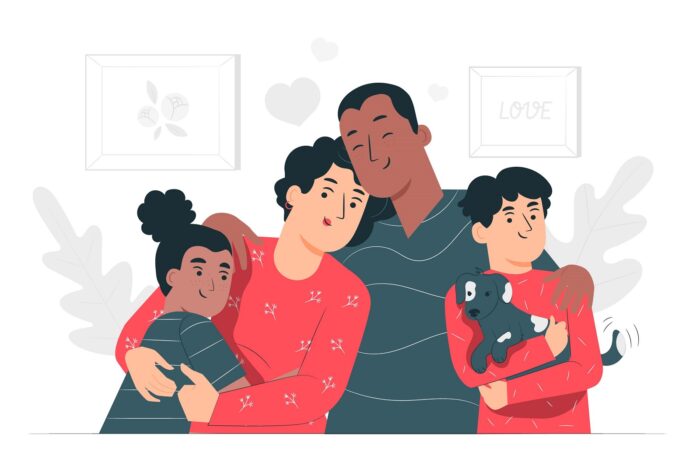The pandemic has caused innumerable changes to the workplace in 2020. One of the clearest issues for employers since the coronavirus reached the United States is an all-time high in leave-of-absence requests.
It’s of little surprise. Complications surrounding the coronavirus extend far beyond the matter of the illness itself—and its viral spread has necessitated an increased push to keep at-risk people at home and out of the office. In the United States, more people are looking to Google for help with leaves of absence in 2020 than ever before: https://trends.google.com/trends/embed/explore/TIMESERIES?req=%7B%22comparisonItem%22%3A%5B%7B%22keyword%22%3A%22leave%20of%20absence%22%2C%22geo%22%3A%22US%22%2C%22time%22%3A%22today%205-y%22%7D%5D%2C%22category%22%3A0%2C%22property%22%3A%22%22%7D&tz=-300&eq=date%3Dtoday%25205-y%26geo%3DUS%26q%3Dleave%2520of%2520absence
While the federal government has responded with a series of stimulus options including sick and family leave adjustments, California recently passed three new measures widely expanding available leave for employees. These three measures, SB 1383, AB 2992, and AB 2017, go into effect in January, 2021. As in all cases when approving leave requests—including in a situation where your employee gets COVID-19—we highly recommend you document all details of the request.
SB 1383
In effect, Senate Bill 1383 protects employees from termination if they elect to request family and medical leave. The bill does not recognize a leave request as granted unless the employer provides a guarantee of employment “in the same or comparable position” upon the end of the leave. For employees, this helps alleviate the fear of losing one’s job for attempting to access available leave under the California Family Rights Act.
A few important notes on SB 1383:
- It applies to all employers with five or more employees. These businesses must provide CFRA leave to qualified employees. Those qualifications include:
- Worked for the employer for at least 12 months, and
- Worked at least 1,250 hours during that time prior to CFRA leave.
- Leave entitlements include up to 12 weeks of unpaid family and medical leave in a 12-month period.
- Employees are entitled to retain their same level of health insurance benefits throughout their leave.
- Significantly, SB 1383 expands the types of leave that can be used under CFRA:

- Family care leave has been expanded to include grandparents, grandchildren, and siblings, in addition to the immediate family. (Note that this differs from FMLA’s definition of “family member.”) SB 1383 also qualifies care of an adult child as leave, another difference between CFRA and FMLA.
- SB 1383 adds “qualifying exigency” leave, which expands family military leave to include the employee’s registered domestic partner who is in the U.S. Armed Forces.
- Qualified employees are eligible to take CFRA leave of absence for one of these reasons:
- The birth of a child or the placement of an adopted or foster care child with an employee,
- Care for a child (including adult children), parent, grandparent, grandchild, sibling, spouse, or registered domestic partner who has a serious health condition,
- The employee’s own serious health condition that prevents the employee from performing the functions of the position (excepting disability leave taken for pregnancy, childbirth, or related conditions),
- “Qualifying exigency” related to family military leave.
- Perhaps the biggest impact is that CRFA and FMLA leaves are different and thus could mean up to 24 total weeks of protected leave—12 weeks each—in a 12-month period. These leaves, though unpaid, retain continued health insurance benefits and a guaranteed right to reinstatement.
AB 2992
This assembly bill expands protections under Labor Code 230 and 230.1 to victims of a crime or public offense that caused physical or mental injury, or victims of a threat of physical injury—essentially, offenses outlined in the Government Code (Section 13951). Those codes are worth your time for more detail.
Basically, though, the bill prevents employers from punishing employees from taking time off in the event of a criminal injury or threat. But it also changes how time off work is categorized in these circumstances. Under the new bill, employees may take time off work to:
- Seek medical attention for injuries caused by crime or abuse,
- Obtain psychological counseling or mental health services related to experiencing crime or abuse, or
- Participate in safety planning and increase safety from future crimes or abuse.
Employees must give advance notice when feasible, though that requirement is flexible. If an employee takes an unscheduled leave of absence, they must provide one of the following within a “reasonable” period of time, according to law firm Jackson Lewis:
- A police report,
- A court order protecting or separating the employee from the perpetrator,
- Documentation from a licensed medical professional,
- Any other form of documentation that reasonably verifies the crime or abuse occurred.
AB 2017
AB 2017 is an amendment to the Labor Code (Section 233) giving employees sole discretion to specify whether the sick leave they request should be categorized as protected sick leave, or “kin care,” or not. This is significant—under current law, employees can use up to half of their accrued sick leave to care for a family member. AB 2017 clarifies that the employee now has the right to designate sick days as “kin care” or not, in order to avoid unintentionally reducing the accrued leave that could be used to care for family.
This update will have no effect on employers who only provide the minimum amount of sick leave required under the Paid Sick Leave law, since all use of sick leave in that situation is protected. Similarly, employers with policies that don’t limit the use of accrued sick leave will not see an impact.
The primary takeaway of all the new leave legislation should be that employees have much more protection in relation to taking sick leave. However, your own local ordinances and unique organizational situation will require you to more closely examine how to stay compliant.


